Archive for September, 2015
-
IF THESE WALLS COULD TALK
450 years ago, the Maltese Islands were in the spotlight of several European sovereigns after they had succeeded to come out victorious from the massive siege that was laid upon them by the powerful Ottoman Empire. Fort St Elmo lay in ruins and the other fortifications and houses which had been targeted by the enemy were in no better shape. The land still seeped in the blood of the thousands who had lost their lives during the fighting, whilst many others remained maimed.
Amid this devastation, the eminence of the surviving Knights of the Order of St John surged, and their fame reached legendary proportions. Letters of congratulations which they received from all over Europe, uplifted their spirits, whilst generous donations eventually helped them to build the new city of Valletta.
The Knights of St John continued to rule the Maltese Islands until 1798, when they were ousted by French Military General, Napoleon Bonaparte. Although, some might believe that at this time, the Order was obliterated, in reality, these mythical Hospitallers are still present amongst us, and are as real as ever.
The Russian Grand Priory of Malta
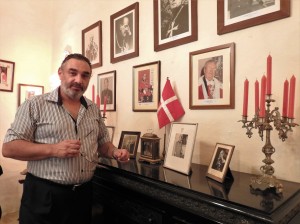 Since the early years of the Hospitallers’ foundation by Blessed Gerard, the Order protected the faithful and provided aid to the sick and poor. These elements have always remained deeply rooted in the mission of the knights who followed throughout the centuries.
Since the early years of the Hospitallers’ foundation by Blessed Gerard, the Order protected the faithful and provided aid to the sick and poor. These elements have always remained deeply rooted in the mission of the knights who followed throughout the centuries.“Even today, as Knights and Dames of the Russian Grand Priory of Malta who form part of the Order of St John of Jerusalem, Knights Hospitallers, under the constitution of the late King Peter II of Yugoslavia, we strive to continue to live up to our motto “Pro Fide, Pro Utilitate Hominum,” declared Chev. Saviour Garcia as we stood in front of a large painting of Blessed Gerard at Palazzino Sapienti in Valletta.
“Today, the Order’s mission still incorporates the duty to profess the Christian faith. However, its present members are not fighters but humanitarians who swear to act for the common good of all people without distinction of race or religion.”
Garcia outlined a number of philantropic projects which the Russian Grand Priory of Malta have been taking care of without much pomposity. Amongst these he mentioned St Joseph’s Residential Home for children in Żabbar, Dar Nazareth’s Residential Home for people with disability in Żejtun, and the construction of a hospital and a hostel in Thailand which caters for the needs of dying children with AIDS.
“The first investiture and the official institution of The Malta Priory took place on March 8, 1964. A few days after, His Majesty King Peter II of Yugoslavia legitimized the Order by giving it a new Constitution to meet 20th century demands. Within the first decades of its existence, The Malta Priory made several notable achievements which ultimately led it to be elevated to Grand Priory by Royal Warrant from King Peter II on Feb 22, 1970. This Royal Warrant gave our Grand Priory the name of Russian Grand Priory of Malta.”
Palazzino Sapienti, Valletta
 Interestingly, it was the same king who donated the sum of 1000 dollars in order to open a fund for the purchase of a large house which was expected to serve as the World Head Quarters of this Order. The choice fell on the prestigious Palazzino Sapienti which today is located at 223, St Paul Street, Valletta, right opposite to the University of Malta Valletta Campus.
Interestingly, it was the same king who donated the sum of 1000 dollars in order to open a fund for the purchase of a large house which was expected to serve as the World Head Quarters of this Order. The choice fell on the prestigious Palazzino Sapienti which today is located at 223, St Paul Street, Valletta, right opposite to the University of Malta Valletta Campus.An original letter held at the archives of Palazzino Sapienti that was sent to Czar Paul I by Grand Master Hompesch in 1797, indicates that at the time, the Russians had an interest to involve themselves in the Order. That is why, after the Knights of St John were expelled from Malta, some of them opted to find refuge in St Petersburg, where they elected the Russian Emperor, Paul I, as their Grand Master, thereby replacing Ferdinand von Hompesch who was then held in disgrace and had to abdicate in 1799.
Prior to its present distinguished function, Palazzino Sapienti had its fair share of interesting history.
“Whilst researching about the origins of this building, I discovered that its construction was commissioned in the late 16th century by the English Grand Prior of the Order of St. John, Sir Richard Shelley. However, he did not have the opportunity to enjoy his residence for long, since he got into disagreement with the Inquisitor after he failed to present to him his correspondence to the Protestant Queen Elizabeth for censorship, as was the regulation at the time. Soon, matters got worse when Shelley had also a dispute with Grand Master Peter del Monte, and in a diplomatic way, this building was taken away from him after he was offered another property. Instead, Palazzino Sapienti became the residence of Fra Nicolo Sollima, the Collegium Melitense Rector,” revealed Garcia.
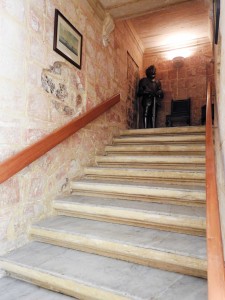 “Stone used for the building of the house was quarried on site. Once the building was complete, the resultant small quarry was used as a water cistern and basement. This process of cutting stones directly from Monte Sciberras hurried the process of the building of the new city.”
“Stone used for the building of the house was quarried on site. Once the building was complete, the resultant small quarry was used as a water cistern and basement. This process of cutting stones directly from Monte Sciberras hurried the process of the building of the new city.”“The facade of the palazzino was imposing, having a main door flanked by two others. The main entrance was decorated by a barrel vaulted ceiling, typical of the 16th century. Traces of a blocked arch located under the staircase which leads up to the piano nobile points out that originally, the level of the street was lower than it is today.”
“On 12th September 1634, a gunpowder magazine located in the whereabouts of the palazzino, blew up, killing 33 persons. The devastated site was left abandoned for thirty years until Grand Master Nicholas Cotoner established the Fondazione Cotoner in order to rebuild the houses in Strada San Paolo. The palazzino had suffered some cracks in the walls and its glass windows were shattered. Some structural changes were done to it, however, this structure was never intended to be built higher than two floors, since it would have been higher than the opposite building and would have cast a shadow on the University’s sundial.”
“Traces of red paint on the walls show that this building was painted in this colour. Meanwhile, the limestone balcony supports, the internal courtyard and the main staircase were adorned with seashell carvings that represented St John the Baptist, the patron saint of the Order of St. John. The seashell is also representative of the water element, in this case creativity and knowledge, as befits the University Rector’s house.”
It was a pleasure to explore this palazzino which I had never visited before. In the meantime, Garcia recounted some curiosities about the notable tenents who lived there.
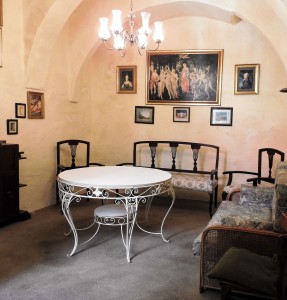 “In 1919, the tenant of Palazzino Sapienti was the lawyer Luigi Camilleri. On 7th June, 1919, Prince Lobanov-Rostovsky and Count Andrey Bobrinsky, both Russian Imperial refugees, were visiting Camilleri at his residence when suddenly the ‘Sette Guigno’ riots broke out. A large crowd made its way to the Royal Malta University and started to attack it, tearing down the English Imperial flag. These two Russian nobles who were witnessing this from the opposite palazzino were scared stiff since the remembrance of the Bolshevik revolution still haunted them. They stayed at the premises till the 12th June when they were escorted back to San Anton Palace in Balzan by Police Superintendent James Frendo Cumbo.”
“In 1919, the tenant of Palazzino Sapienti was the lawyer Luigi Camilleri. On 7th June, 1919, Prince Lobanov-Rostovsky and Count Andrey Bobrinsky, both Russian Imperial refugees, were visiting Camilleri at his residence when suddenly the ‘Sette Guigno’ riots broke out. A large crowd made its way to the Royal Malta University and started to attack it, tearing down the English Imperial flag. These two Russian nobles who were witnessing this from the opposite palazzino were scared stiff since the remembrance of the Bolshevik revolution still haunted them. They stayed at the premises till the 12th June when they were escorted back to San Anton Palace in Balzan by Police Superintendent James Frendo Cumbo.”“During the Second World War, the premises were used by the British Royal Air Force for the decoding of enemy aerial operations. Palazzino Sapienti survived two enemy bombs which were dropped in the vicinity. Yet tragedy still struck this place when two children, who were attending school in this building after the Valletta school was hit, found their way down a spiral staircase which led to the city’s undergrounds and got lost there. No one ever found them and these stairs have been blocked ever since.”
 Today, this building is also proud to possess three saint reliquaries: a first degree bone fragment from the Order’s Patron Saint St. John the Baptist, and two third degree relics in the form of a throne chair on which St. John Paul II sat during one of his Papal visits to Italy, and a hand signed dedication by Sister Mother Theresa of Calcutta who was also a member of the Order.
Today, this building is also proud to possess three saint reliquaries: a first degree bone fragment from the Order’s Patron Saint St. John the Baptist, and two third degree relics in the form of a throne chair on which St. John Paul II sat during one of his Papal visits to Italy, and a hand signed dedication by Sister Mother Theresa of Calcutta who was also a member of the Order.“Besides housing the Seat of the Order of St John of Jerusalem, Knight Hospitaller, Palazzino Sapienti has now opened its doors to the public who might be interested to visit it. Moreover lectures regarding various subjects are organized inside one of its rooms wherein we are also giving the opportunity to university students who would like to present talks about their studies or thesis.”
Certainly, an invitation to such a prestigious, architectural, and historical gem, should not be missed.
(This article was published in ‘Focus Valletta’ Suppliment issued with The Times of Malta dated 30 September 2015)
-
A SPECTACULAR WONDERLAND
Travelling at an impressive 300km/hr, a high-speed railway train took 5 hours and a half to reach Shanghai from Beijing. The voyage was impeccably comfortable. The train station was huge and amazing. Yet the actual surprise was the sheer difference between Beijing and Shanghai.
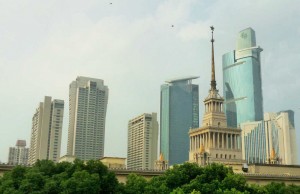 Traffic in Beijing was crazy but we had hardly left Shanghai’s train station when we were already blocked behind a long queue of cars. This is no wonder if one considers that about 24 million people live in this city. Recent modernization and progress in Shanghai have attracted many persons and in the last five years, the population tripled itself.
Traffic in Beijing was crazy but we had hardly left Shanghai’s train station when we were already blocked behind a long queue of cars. This is no wonder if one considers that about 24 million people live in this city. Recent modernization and progress in Shanghai have attracted many persons and in the last five years, the population tripled itself.Along the road, we observed that plain residential high rises were wide to an extreme. Besides them, luxurious or commercial high rises glistened beautifully as if in a bid to outshine the sun itself. Older traditional structures, together with buildings which formed part of the foreign concession areas, claimed the passers-by attention with their distinguished architecture.
Originally, a simple fishing village, Shanghai’s economy expanded rapidly once it was turned into a commercial port. Since at the time, traders could only use the sea or waterways as a means of transportation, Shanghai’s wide harbour began to attract numerous Chinese from various parts of China and also several foreigners. A society of immigrants started to flourish, each of which began to leave their influences in this new city.
In a few years, a large flat muddy area, overgrown with reeds, which was situated on the north bank of Huangpu River, was turned into a zone for foreigners and they named it the Bund. Starting from just a one-sided street, running in north-south direction, the location soon flourished with commercial buildings which increased further the significance and the economy of Shanghai.
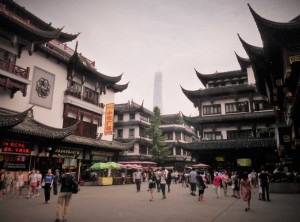 Yet in the mid-19th century, serious conflicts arose between the forces of Western countries and the Chinese, Qing dynasty, after China attempted to suppress the opium trade. Since the 18th century, foreign traders, particularly the British, had been illegally exporting opium which they imported from India. By the 19th century, this trade had grown dramatically, and the resulting widespread addiction in China began to cause serious social and economic disruption. Two Opium Wars broke out in which China was twice defeated and foreign concessions were established. It was in 1943, during the war between China and Japan, that the foreigners decided to abandon Shanghai.
Yet in the mid-19th century, serious conflicts arose between the forces of Western countries and the Chinese, Qing dynasty, after China attempted to suppress the opium trade. Since the 18th century, foreign traders, particularly the British, had been illegally exporting opium which they imported from India. By the 19th century, this trade had grown dramatically, and the resulting widespread addiction in China began to cause serious social and economic disruption. Two Opium Wars broke out in which China was twice defeated and foreign concessions were established. It was in 1943, during the war between China and Japan, that the foreigners decided to abandon Shanghai.Between the 1950s and the 1960s, some of the elder people who resided in Shanghai, proposed to the government to demolish these colonial buildings which reminded them of a bitter past. However eventually, it was decided to retain these structures since they represented a real part of the city’s history, even if painful.
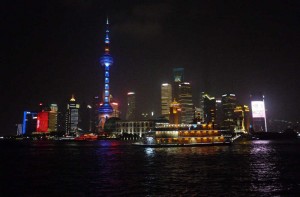 In the last 100 years, the Bund frontage buildings were repaired and reconstructed several times. Today, this area is embellished with prominent and elegant structures which contrast deeply with the opposite side of the Bund wherein some daring and bizarre high rises have been built. At night, the latter, turns into a spectacular wonderland as the colossal structures are fully illuminated in bright and colourful lights.
In the last 100 years, the Bund frontage buildings were repaired and reconstructed several times. Today, this area is embellished with prominent and elegant structures which contrast deeply with the opposite side of the Bund wherein some daring and bizarre high rises have been built. At night, the latter, turns into a spectacular wonderland as the colossal structures are fully illuminated in bright and colourful lights.A visit to this district which looks like a strange combination of London and New York, will reveal why it has become the symbol of Shanghai and the pride of many of its residents. Crowds of visitors gather daily at the Bund in order to enjoy the beautiful scenery on the Huangpu River which divides the old and the modern zones. Nonetheless, if one wants to enjoy the experience to the full, a night boat cruise is certainly recommended.
Our guide from Shanghai explained to us that this city has changed tremendously in these last years. In 1987, there were only 12 high rise buildings in Shanghai, whereas today, there are around 140,000. People have more money in their pockets, education facilities have increased, and life is more comfortable especially due to the efficient and far-reaching subway system. Yet he felt that simultaneously, Shanghai citizens were losing some important characteristics of the city. Indeed, when elders returned to the city after living far away, they could not find their way around as a number of the old landmarks have gone or are engulfed amongst the different modern landscape.
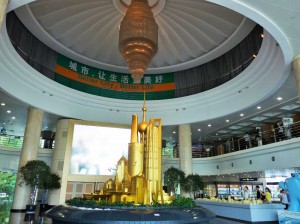 The repercussions of the sudden modernization of Shanghai have always been the focus of the authorities which are trying their very best to mitigate the impact of such changes. Their plans and projects are comprehensively described in the vast exhibitions which are displayed at the Shanghai Urban Planning Exhibition Hall which is located at the People’s Square. The centrepiece of the exhibition is a huge scale model of the city which shows all the existing and approved buildings. Moreover, a circular screen provides visitors with the opportunity to enjoy a fascinating 3D virtual tour around the city of Shanghai.
The repercussions of the sudden modernization of Shanghai have always been the focus of the authorities which are trying their very best to mitigate the impact of such changes. Their plans and projects are comprehensively described in the vast exhibitions which are displayed at the Shanghai Urban Planning Exhibition Hall which is located at the People’s Square. The centrepiece of the exhibition is a huge scale model of the city which shows all the existing and approved buildings. Moreover, a circular screen provides visitors with the opportunity to enjoy a fascinating 3D virtual tour around the city of Shanghai.Photo presentations explain how old buildings which were worth preserving and conserving, were carefully selected and restored, and then given a function in order to revive them. A particular example is the M50 contemporary art district which up to a few years ago was a disused industrial space. Another is the pedestrian walkway of Nanjing Road wherein 100 year old shops were amalgamated with new structures from where now, one can find speciality products of different trades standing next to famous brands.
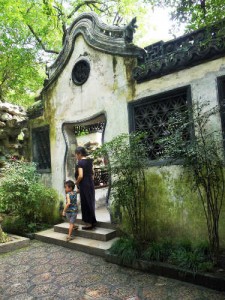 In Shanghai Old Street, which was reconstructed according to traditional Chinese style, visitors can roam around Yuyuan Market and absorb the allure of earlier times, whereas the nearby Yuyuan Gardens provide the beauty and serenity of a green environment. In the outskirts of Shanghai, ancient towns, such as Zhujiajiao, represent life of a distant and far simpler period in Shanghai. Concentrated under Shanghai’s Expo2010 motto ‘Better City, Better Life’, the main message of this place is to urge people to be proud as well as protective of their new city.
In Shanghai Old Street, which was reconstructed according to traditional Chinese style, visitors can roam around Yuyuan Market and absorb the allure of earlier times, whereas the nearby Yuyuan Gardens provide the beauty and serenity of a green environment. In the outskirts of Shanghai, ancient towns, such as Zhujiajiao, represent life of a distant and far simpler period in Shanghai. Concentrated under Shanghai’s Expo2010 motto ‘Better City, Better Life’, the main message of this place is to urge people to be proud as well as protective of their new city.A delightful wider look at the landscape of the city of Shanghai can be appreciated at a choice of revolving restaurants which are available on high towers. Definitely a surreal experience which gives you the ultimate impression of being on a totally different planet.
(This article was published in Escape Suppliment of The Sunday Times of Malta dated 13th September 2015)
Travelogue
Archives
Recent Posts
- A MATTER OF FATE
- MALTA’S PREHISTORIC TREASURES
- THE MAGIC IS IN THE DETAIL
- THE SELLING GAME
- NEVER FORGOTTEN
- Ġrajjiet mhux mitmuma – 35 sena mit-Traġedja tal-Patrol Boat C23
- AN UNEXPECTED VISIT
- THE SISTERS OF THE CRIB
Comments
- Pauline Harkins on Novella – Li kieku stajt!
- admin on IL-KARNIVAL TRAĠIKU TAL-1823
- Albert on IL-KARNIVAL TRAĠIKU TAL-1823
- Martin Ratcliffe on Love in the time of war
- admin on 24 SENA ILU: IT-TRAĠEDJA TAL-PATROL BOAT C23